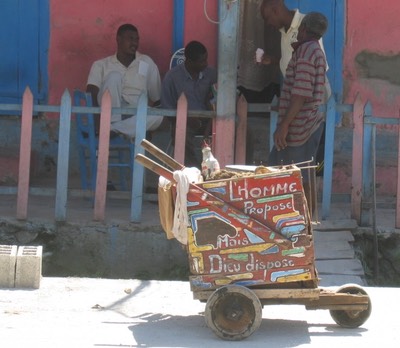Most of the seismic energy of our planet is released at subduction zones by earthquakes that occur either at the plate interface or on active faults in the overriding plate. It has long been thought that interplate coupling in such contexts — hence their seismogenic potential — depended for a large part on the age of the subducting plate. Recent large subduction earthquakes have shaken this paradigm, to the point that some now claim that all subductions have the capacity of generating mega-earthquakes. The issue has therefore refocused on spatial and temporal variations of interplate coupling and how these may relate to asperities and barriers on the plate interface and to the deformation of the overriding plate. The Caribbean plate and its boundaries with north and south America, marked by subductions and large intra-arc strike-slip faults, are a natural laboratory for the study of strain partitioning and interseismic plate coupling in relation to large earthquakes.
In 2015, we published the first comprehensive GPS velocity field for the Caribbean region, using all publicly available campaign and continuous GPS measurements. We used this velocity field as input to a kinematic model where surface velocities results from the rotation of rigid blocks bounded by locked faults accumulating interseismic strain, while allowing for partial locking along the Lesser Antilles, Puerto Rico, and Hispaniola subductions. This approach allowed us to determine the optimal block geometry of the plate boundary zones, to estimate slip rates on the block-bounding faults, and the lateral variability of mechanical coupling along the Lesser Antilles — Puerto Rico subduction. We find, in particular, that the GPS data do not require a distinct Northern Lesser Antilles block and precludes more than 3 mm/yr of strain accumulation on the Lesser Antilles-Puerto Rico subduction plate interface, which appears essentially uncoupled. The transition from a coupled to an uncoupled subduction coincides with a transition in the long-term geological behavior of the Caribbean plate margin from compressional (Hispaniola) to extensional (Puerto Rico and Lesser Antilles), a characteristics shared with several with other subduction systems.
We continue updating this work by:
- Processing data from all publicly available GPS stations in the Caribbean;
- Installing new GPS stations in Haiti and repeatedly remeasuring legacy ones, in collaboration with the URGéo laboratory of the Faculté des Sciences of the Haiti state University;
- Installing and repeatedly measuring GPS stations in Cuba, in collaboration with the Cuban National Seismological Center (CENAIS) and with GEOCUBA;
- Modeling the dynamics of the Lesser-Greater Antilles plate boundary system.
Figure: Best fit model geometry with block boundaries as solid black lines and predicted relative block motions as arrows with velocity indicated in mm/yr with their 95% confidence ellipse according to the parameters listed in Table 2. Red = strike slip (i.e., slip direction with ± 30o from fault strike), blue = reverse or transpressional, green = normal of transtensional. Residual velocities are shown with grey arrows. Colors on the subduction plate interface indicate the coupling ratio. Note the coincidence between the transition from coupled to uncoupled plate interface with the transition from Bahamas Platform collision to oceanic subduction at the Puerto Rico trench. From Symithe et al., 2015.
